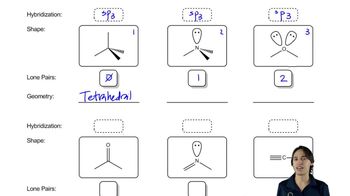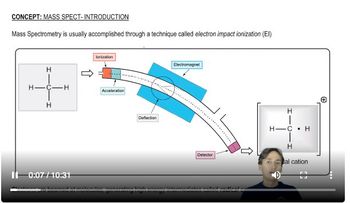Predict the approximate bond angles:
c. the C—N—H bond angle in (CH3)2NH
d. the C—N—C bond angle in (CH3)2NH
 Verified step by step guidance
Verified step by step guidance Verified video answer for a similar problem:
Verified video answer for a similar problem:



 7:44m
7:44mMaster Molecular Geometry Explained. with a bite sized video explanation from Johnny
Start learning